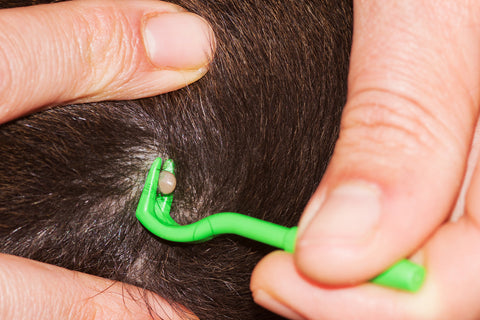Our vet's top tips this summer
Jul 27, 2018
With record temperatures around the country, it is important to keep our dogs safe this summer.
Did you know that dogs cannot cool themselves by sweating like humans? Though they sweat a small amount through glands on their foot pads, the main way a dog cools down is by panting. Unfortunately, sometimes panting is not enough to lower body temperature on a very hot and humid day.
1) Exercise your dog early in the morning or late in the evening
Since these are the cooler parts of the day, this will make the walk more comfortable for both you and your dog. The pavement will also be cooler, reducing the risk of burned paw pads. The five-second rule is a great guide to follow: Place the back of your hand on the pavement. If you cannot hold it for five seconds, it's too hot to walk your dog.
2) Use hot weather as an excuse for your dog to swim more
If your dog loves water, then a shallow kids' pool might be a great addition to your garden. Many dogs enjoy playing and lounging in the cool water. Just make sure you supervise your dog at all times. Keep the pool in a shady spot and change the water frequently. Do not leave the pool full when not in use, as it may attract biting flies. Instead of a pool, you might also try running a sprinkler to see if your dog likes it. If you’re lucky enough to live close to the sea or a shallow river, we’re sure they’ll enjoy some extra paddle time. If your dog is not used to swimming, don’t overdo it, as this can cause swimmers' tail.

3) Cover up or use sunscreen
Pale-coloured dogs are vulnerable to sunburn, particularly on their ears, noses and their tummy. Sun damage can lead to skin cancer which may require surgery. Sunlight can also make existing skin conditions worse, particularly if your dog has allergies. The best prevention is to keep your dog indoors when the sun is strongest. You can also apply a sunblock made specifically for pets. If your dog’s skin looks sore, crusty or scaly, call your vet.
4) Never leave your dog in your car in hot weather
A car can feel like an oven very quickly, even when it doesn’t feel that warm outside. When it is 22°C outside - within an hour - the temperature in a car can reach an unbearable 47°C. Never leave a dog in a car, even for a moment. "Not long" is too long. If you see a dog in distress inside a car, official advice from the RSPCA is to dial 999 immediately and ask for the police. A dog in distress in a hot car is an emergency and the police will advise you what to do based on the situation.
5) Don't cover your dog
Our vet recommends not putting anything on a dog in this extremely hot weather as incorrect use may have an insulating effect.
6) Beware of heat stroke
If you are worried your dog is showing signs of heatstroke (excessive panting, drooling, red gums, wobbling, collapsed or vomiting) move them to a cool, shaded area and immediately douse them with cool (not ice cold) water. Then place a wet towel or Dogrobe close to their armpits, belly and groin. Place them in the breeze of a fan. Continue to douse them with cool water until their breathing starts to settle but never so much that they begin to shiver. Once your dog is cooler, take them to the nearest vet as a matter of urgency.
7) Watch out for blue-green algae
Blue-green algae can be toxic to dogs and is most common in non-flowing fresh water such as lakes and ponds during hot weather when there is less rainfall. It can look like a green, blue green or brown coloured scum or foam floating on the water surface. Blooms of blue-green algae can produce harmful toxins which stop a dog’s liver from functioning properly and sadly, even be fatal. The algae may be present in a harmful form even if you cannot see it, so take note of any warning signs in the area. Never let your dog swim in or drink from water sources you suspect may be contaminated by blue green algae, and if your dog has been swimming outside, always wash them thoroughly afterwards. Call your vet immediately if you suspect your dog may have drunk some of this water or licked the algae from their fur.

8) Check for ticks
The only way to prevent ticks and ensure infections are not transmitted is through the use of medications: tablets, spot-ons and collars. Examine your dog regularly, and if you do find a tick, remove with an O'Tom tick remover in a twisting action.

Read next blog Have you seen it yet? Our camouflage Dogrobe is revealed!


